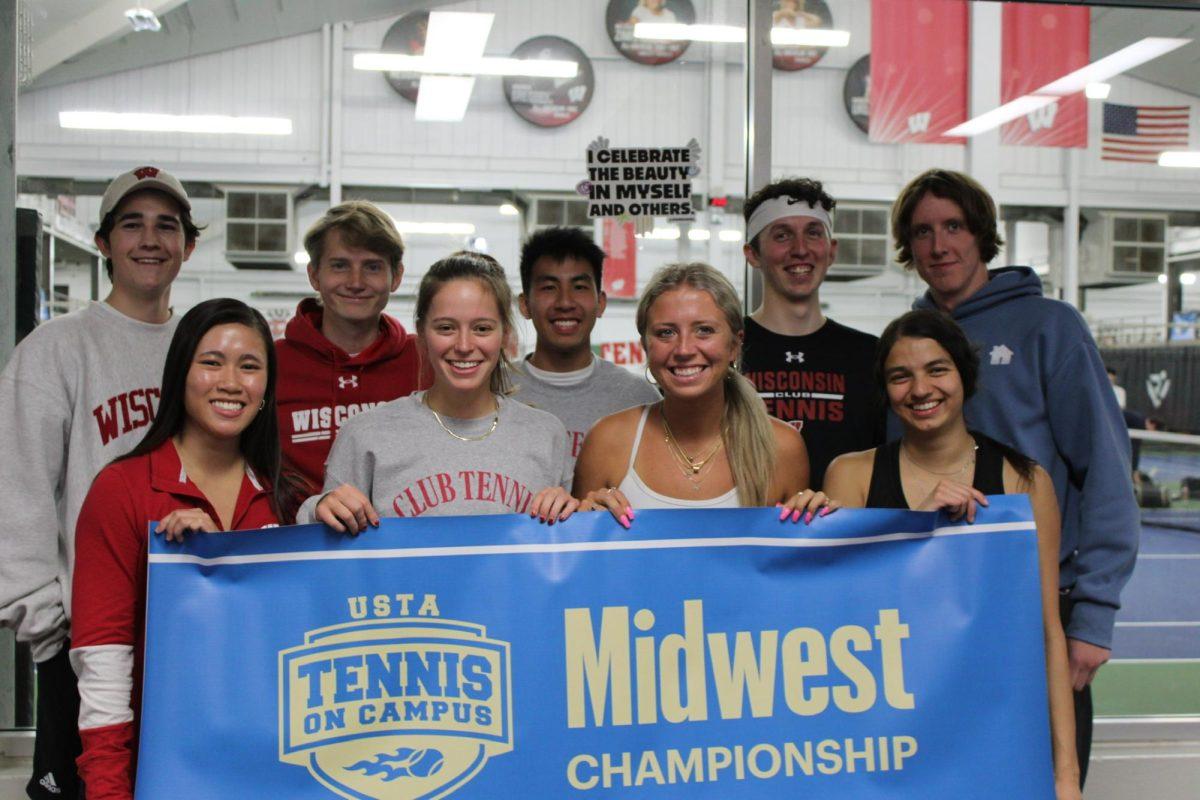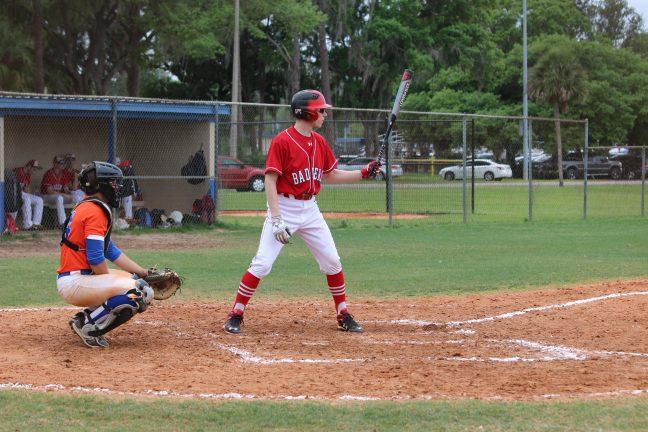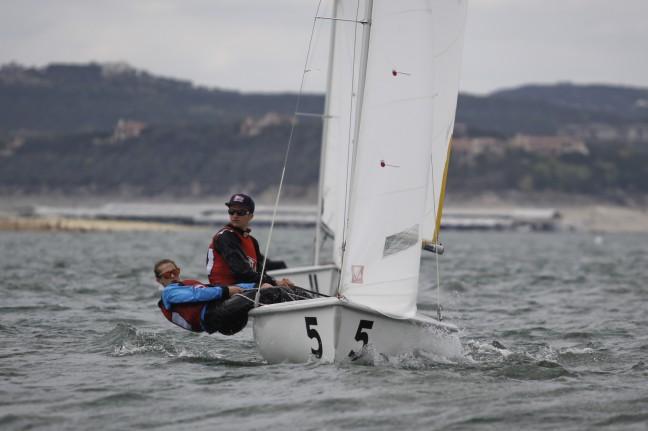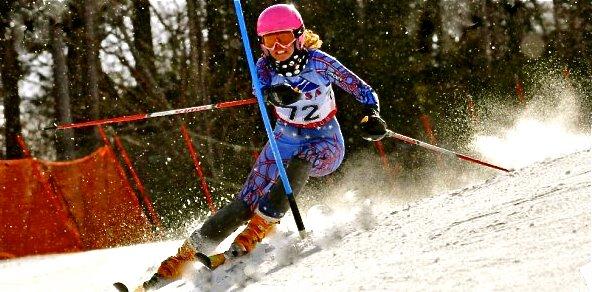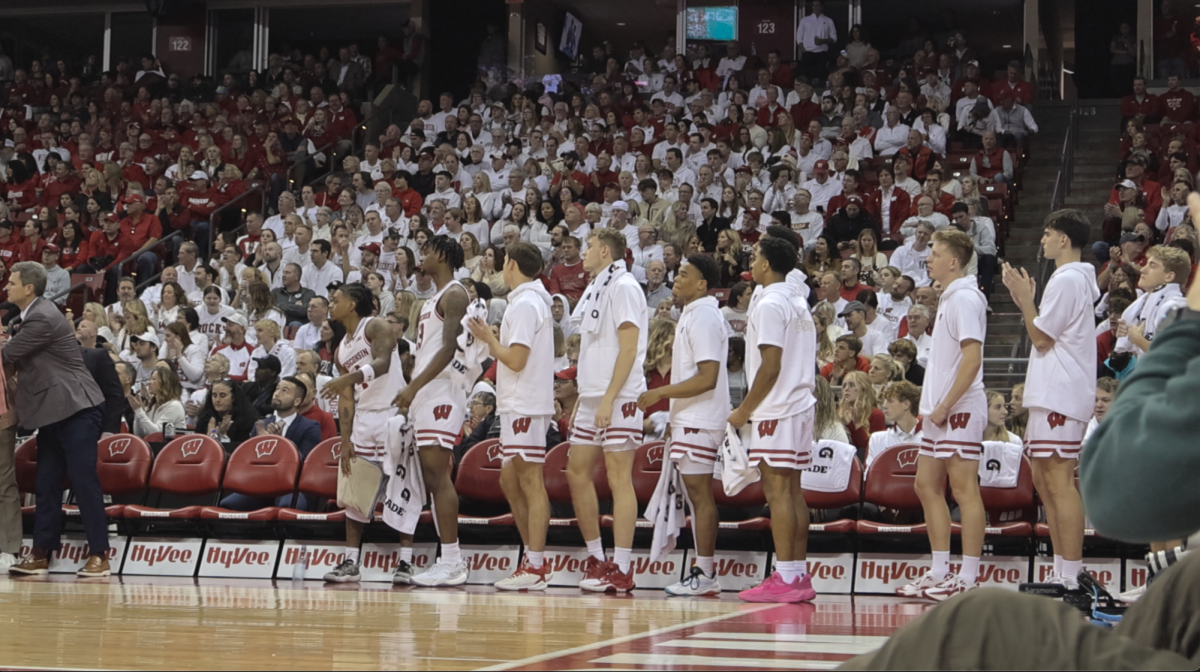The seven white sails billow as they catch the wind on Lake Mendota, carrying the University of Wisconsin sailing team members farther from the shore outside Memorial Union.
UW junior Meg Six and her partner go into a tack to help their boat gain momentum while turning. Just as the 11-foot-long boat seems to tip irreversibly toward the water, Six stands up and yanks the boat back upright.
After spending every weekend in March traveling to and from regattas, Six enjoyed two weekends of freedom, and after getting the piers in April 5, the team decided to sail on their own lake for the first time in a long time.
Typically Six spends eight to 10 hours of each week practicing, with more time involved on weekends she competes. As a UW club sport athlete, Six is part of a subculture that is less visible than UW varsity athletics, but at times just as dedicated.
Juggling it all
A French and English double major, Six has learned how to manage her time effectively during the team’s fall and spring competition schedule.
The Sailing Team travels a lot, with its meets on the east coast requiring nearly 20 hours of driving each way.
Depending on where the meets are, the team returns to Madison anywhere from Sunday evening to 7 a.m. Monday.
“I found that with professors, if I talk to them early on in the semester, I can usually find some way to make up for any lost lectures or discussions,” she said. “I generally have a plan with whoever is teaching the class, usually extra work to make-up.”
Most professors are flexible, Six said, but when midterms and papers start to pile up having a large team benefits those who need to study instead of compete.
The team holds practice Tuesday through Friday each week, with Monday serving as a day to rest and catch up on homework. Team members need to attend two practices each week if they want to compete on the weekends, Six said.
During the winter the team does cross-training exercises at the Southeast Recreational Facility. When the ice recedes from Lake Mendota, though, the team starts practice at 2:30 p.m. each day, usually hitting the water around 3-3:30 p.m. after gearing up and rigging the boats.
Once on the water, the group does warm-up drills, followed by longer drills. Six said they usually end practice with anywhere from three to five races before heading back in.
Club Teams at UW
Club teams such as the sailing team have successfully represented UW since the 1960s, according to Dahl. The sailing team exemplifies this success, boasting numerous championships, five All-Americans and three Olympians.
UW sailors frequently compete against varsity teams from other schools, which Dahl said is not unusual for UW club teams.
Thirty-five clubs represent sports from archery and Frisbee to table tennis, with some clubs fielding more than one team.
Unlike varsity athletes who have access to a tutoring center in Camp Randall Stadium, club sport athletes typically form their own study groups or seek academic help from Greater University Tutoring Services.
And while varsity athletes are required to maintain a certain grade point average to compete, club sport athletes have no such requirements from UW. Varsity athletes need to have a 1.65 at the end of their first semester, increasing for the next three semesters to 1.80, then up to 1.90 for their junior year and finally a 2.0 for fourth and fifth year eligibility, according to Big Ten and NCAA eligibility requirements. In contrast, a club team’s national governing body may set a GPA threshold, or the club team itself might, Dahl said, but otherwise students are on their own.
Competing on the sailing team also has a financial cost, with team members paying for nearly all travel costs. Some club teams do receive funding from segregated fees, Dahl said, but the funds are limited to no more than $2,500, and teams are not eligible for funding until they’ve been around for five years.
“The best part”
Sailing and school dominate Six’s time at UW, not leaving much room for involvement in other activities.
Looking back, even though joining the sailing team forced her to adjust a lot, Six said the benefits of joining outweighed those adjustments.
“The best part is just getting the chance to sail and compete with people in the Midwest as well as across the country,” Six said. “I have great friends from all the Big Ten schools, and you get to see a lot of the country by driving around this way.”
Six’s noble nature is part of why she made friends, with the honors she earned as a sophomore proving it.


